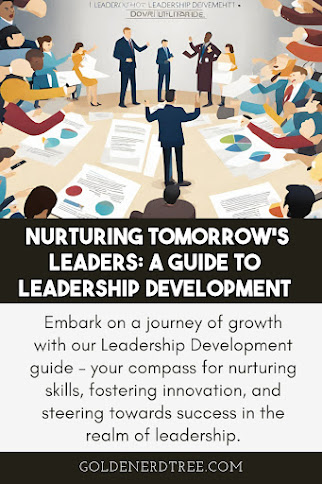- Get link
- X
- Other Apps
- Get link
- X
- Other Apps
In the ever-evolving landscape of business and organizations, effective leadership is a cornerstone of success. In this blog post, we delve into the world of leadership development, exploring what it entails, why it matters, and how individuals and organizations can foster the growth of exemplary leaders.
Understanding Leadership Development
What is Leadership Development?
Leadership development is a systematic and strategic approach to nurturing and enhancing the skills, abilities, and qualities of individuals to prepare them for leadership roles. It involves a continuous process of learning, self-discovery, and skill-building to equip aspiring leaders with the tools needed to guide teams and organizations to success.
The Importance of Leadership Development
1. Organizational Success:
Effective leadership directly contributes to organizational success. Leaders who are well-developed can inspire and motivate teams, drive innovation, and navigate challenges with resilience.
2. Employee Engagement:
Leadership development fosters a positive organizational culture. Engaged and motivated leaders create a work environment where employees feel valued, empowered, and aligned with the company's vision.
3. Adaptability and Innovation:
Developing leaders who are adaptable and innovative is crucial in today's dynamic business landscape. Strong leadership can steer organizations through change, seize opportunities, and foster a culture of continuous improvement.
4. Succession Planning:
Investing in leadership development is a proactive approach to succession planning. Identifying and grooming emerging leaders ensures a smooth transition of leadership roles, reducing disruptions and maintaining organizational stability.
Strategies for Effective Leadership Development
1. Structured Training Programs:
Implement structured training programs that focus on leadership skills, emotional intelligence, decision-making, and effective communication. These programs can be conducted internally or through external resources.
2. Mentorship and Coaching:
Establish mentorship and coaching programs that pair emerging leaders with seasoned professionals. The guidance and insights provided by experienced mentors can significantly contribute to leadership development.
3. 360-Degree Feedback:
Utilize 360-degree feedback mechanisms to provide comprehensive insights into leadership capabilities. Gathering feedback from peers, subordinates, and superiors helps leaders identify strengths and areas for improvement.
4. Continuous Learning Opportunities:
Encourage a culture of continuous learning by providing access to workshops, seminars, online courses, and leadership conferences. This exposure allows leaders to stay abreast of industry trends and refine their skills.
Challenges in Leadership Development
1. Time Constraints:
Leaders often face time constraints due to their demanding roles. Finding a balance between daily responsibilities and investing time in personal development can be challenging.
2. Resistance to Change:
Some individuals may resist changes in leadership approaches or methodologies. Overcoming this resistance requires effective communication and a commitment to explaining the benefits of ongoing development.
Conclusion
Leadership development is not a destination but a journey, and investing in this journey is an investment in the future success of individuals and organizations. By recognizing the importance of leadership development, implementing effective strategies, and overcoming challenges, we can collectively nurture a generation of leaders capable of guiding us towards prosperity.
As we embark on this journey of leadership development, let us remain committed to fostering a culture that values continuous learning, embraces diversity of thought, and cultivates the leadership potential within each individual.
- Get link
- X
- Other Apps

Comments
Post a Comment